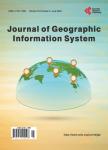Quantitative versus Qualitative Geospatial Data in Spatial Modelling and Decision Making
Quantitative versus Qualitative Geospatial Data in Spatial Modelling and Decision Making作者机构:Division of Spatial Information Science Graduate School of Life and Environmental Sciences University of Tsukuba
出 版 物:《Journal of Geographic Information System》 (地理信息系统(英文))
年 卷 期:2012年第4卷第3期
页 面:237-241页
学科分类:1002[医学-临床医学] 100214[医学-肿瘤学] 10[医学]
主 题:Quantitative and Qualitative Geospatial Data Spatial Modelling and Decision Making
摘 要:In general, geospatial data can be divided into two formats, raster and vector formats. A raster consists of a matrix of cells where each cell contains a value representing quantitative information, such as temperature, vegetation intensity, land use/cover, elevation, etc. A vector data consists of points, lines and polygons representing location or distance or area of landscape features in graphical forms. Many raster data are derived from remote sensing techniques using sophisticated sensors by quantitative approach and many vector data are generated from GIS processes by qualitative approach. Among them, land use/cover data is frequently used in many GIS analyses and spatial modeling processes. However, proper use of quantitative and qualitative geospatial data is important in spatial modeling and decision making. In this article, we discuss common geospatial data formats, their origins and proper use in spatial modelling and decision making processes.



